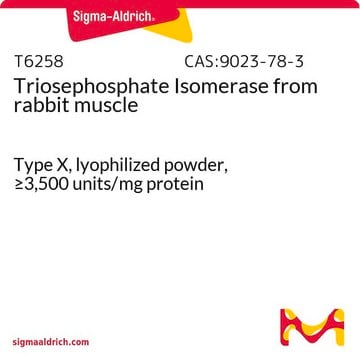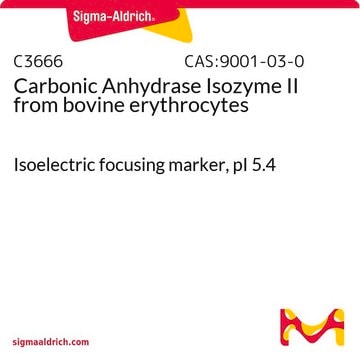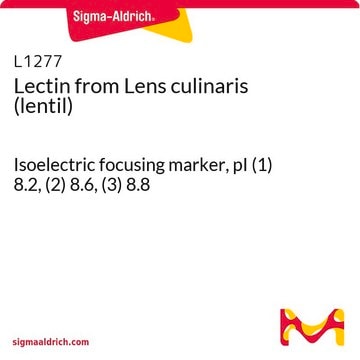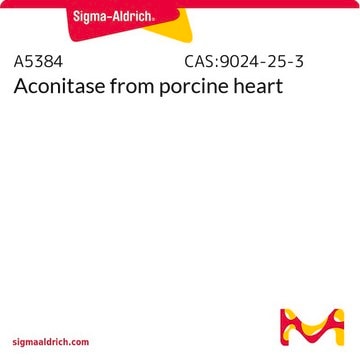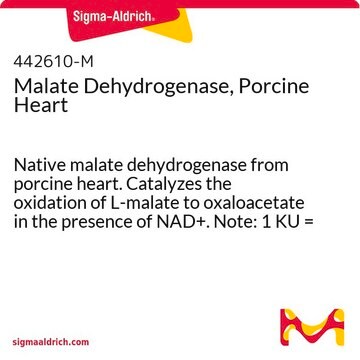C3260
Citrate Synthase from porcine heart
ammonium sulfate suspension, ≥100 units/mg protein
Sinónimos:
Citrate condensing enzyme, Citrate oxaloacetate lyase (CoA-acetylating)
About This Item
Productos recomendados
origen biológico
Porcine heart
Nivel de calidad
Formulario
ammonium sulfate suspension
actividad específica
≥100 units/mg protein
mol peso
98 kDa ( 49 kDa monomer)
solubilidad
H2O: soluble 1.0 mg/mL, clear
actividad extraña
isocitrate dehydrogenase and aconitase ≤0.01%
malic dehydrogenase ≤0.1%
temp. de almacenamiento
2-8°C
Aplicación
- to inject newt egg for determining its importance in egg activation at fertilization
- in the preparation of reaction mix to determine pyruvate carboxylase enzyme activity
- to examine whether it can induce a [Ca2+] increase and egg activation in unfertilized eggs
Acciones bioquímicas o fisiológicas
Definición de unidad
Forma física
Nota de preparación
Código de clase de almacenamiento
12 - Non Combustible Liquids
Clase de riesgo para el agua (WGK)
WGK 1
Punto de inflamabilidad (°F)
Not applicable
Punto de inflamabilidad (°C)
Not applicable
Listados normativos
Los listados normativos se proporcionan para los productos químicos principalmente. Para los productos no químicos sólo se puede proporcionar información limitada. Si no hay ninguna entrada, significa que ninguno de los componentes está en la lista. Es obligación del usuario garantizar el uso seguro y legal del producto.
EU REACH Annex XVII (Restriction List)
Elija entre una de las versiones más recientes:
¿Ya tiene este producto?
Encuentre la documentación para los productos que ha comprado recientemente en la Biblioteca de documentos.
Los clientes también vieron
Artículos
Instructions for working with enzymes supplied as ammonium sulfate suspensions
Nuestro equipo de científicos tiene experiencia en todas las áreas de investigación: Ciencias de la vida, Ciencia de los materiales, Síntesis química, Cromatografía, Analítica y muchas otras.
Póngase en contacto con el Servicio técnico



